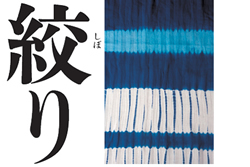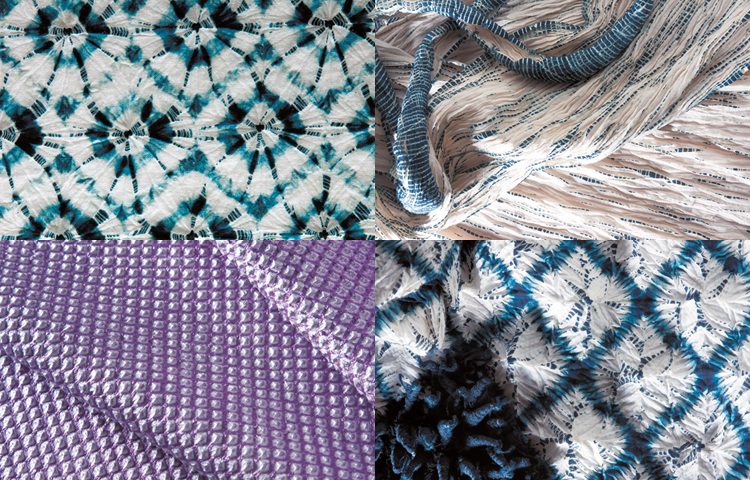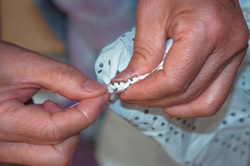niponica is a web magazine that introduces modern Japan to people all over the world.
2013 No.11

To read the e-book you need to have JavaScript enabled in your browser and a free Flash Player plug-in from Adobe Systems Inc. installed.
Japanese Fabrics Have Their Global Reputation Wrapped Up

Dyeing and Weaving
Japan's textile culture—Shaped by a rich array of techniques

Shibori-zome dyeing refers to a set of dyeing techniques used to create simpler patterns by binding, stitching or folding the fabric to prevent dye from coloring those areas of the cloth. Although tiedyeing techniques have evolved in many cultures around the world, Japanese shibori is unique in the wide variety of patterns that have developed.
Collaboration: Takeda Kahei Shoten and Arimatsu-Narumi Shiborikaikan
Photos by Takahashi Hitomi

Arimatsu shibori, originating in the Aichi Prefecture town of Arimatsu, is a well-known style of cotton shibori-zome. Inheriting tradition from the early 17th century founder of the Arimatsu shibori school, Takeda Kahei Shoten displays an amazing spectrum of shibori patterns, including the kumo shibori pattern that resembles spider webs and kanoko shibori, a technique that involves tying off small bobbles of fabric to create speckled cloth with a bumpy texture. Today, fabrics woven by intentionally omitting intermittent warp threads to retain a bumpy or wrinkled texture can be found worldwide.








